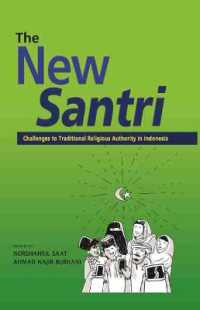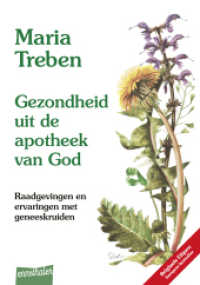Full Description
With pedagogical philosophy and practice changing significantly, faculty development has become much more important. Each chapter in this volume identifies particular areas of opportunity, and although the authors recognize that not every initiative suggested can be implemented by all institutions circumstances such as institutional mission, available resources, and governance issues will dictate that it is their hope that every reader will be able to glean details that might provide a spark or fan a flame on campus. As educators themselves, McKee, Johnson, Ritchie, and Tew invite you to consider the challenges, explore the possibilities, and join them on the journey. This is the 133rd volume of this Jossey-Bass higher education series. New Directions for Teaching and Learning offers a comprehensive range of ideas and techniques for improving college teaching based on the experience of seasoned instructors and the latest findings of educational and psychological researchers.
Contents
EDITORS NOTES 1C. William McKee, Mitzy Johnson, William F. Ritchie, W. Mark Tew 1. Setting the Stage for Teaching and Learning in American Higher Education: Making the Case for Faculty Development 3 C. William McKee, W. Mark Tew This chapter identifies five major shifts in American higher education that are reshaping the necessity of effective, ongoing professional development of the faculty. 2. Professional Development of the Faculty: Past and Present 15 C. William McKee, Mitzy Johnson, William F. Ritchie, W. Mark Tew This chapter reviews the unique contribution of three different faculty development research projects and identifies common themes with which educators have struggled over the past four decades. 3. Cocreating Value in Teaching and Learning Centers 21 David W. Schumann, John Peters, Taimi Olsen This chapter presents the history of teaching and learning centers, a snapshot of current practices at leading teaching and learning centers, and the contributions expected in the field of faculty development associated with the ongoing growth of teaching and learning centers. 4. Creating a Culture of Appreciation for Faculty Development 33 James P. Honan, Andrew Westmoreland, W. Mark Tew This chapter presents views of a current trustee, a president, and financial officer regarding the importance of nonacademic support for cultivating a campus-wide culture of faculty development. 5. Innovative Ways of Assessing Faculty Development 47 L. Dee Fink Given the increased scrutiny of higher education and the general public s desire for accountability, this chapter address how and why colleges and universities must enhance their ability to assess all their activities, including the professional development of the faculty. 6. Virtual Space (E-Learning) Faculty Development 61 Christian D. Pruett, Terry Pollard This chapter explores the necessity of achieving professional development of the faculty who are working in a different instructional delivery environment and presents solutions adopted in the Mississippi Community College system. 7. Clarifying the Differences between Training, Development, and Enrichment: The Role of Institutional Belief Constructs in Creating the Purpose of Faculty Learning Initiatives 71 Christopher Stabile, William F. Ritchie In this chapter the contributors discuss the difference between procedural orientation and true development of a faculty member as an educational professional. 8. The Future of Faculty Development: Where Are We Going? 85 Ann E. Austin, Mary Deane Sorcinelli Written by foremost researchers in the field of professional development of the faculty, this chapter prognosticates what is ahead for higher education. INDEX 99








